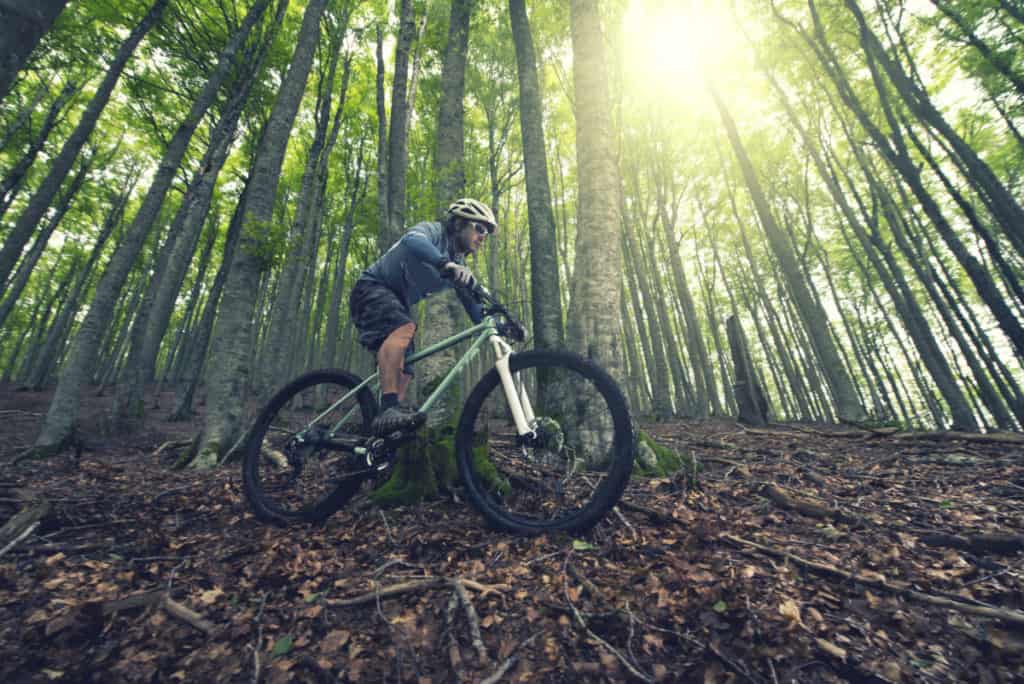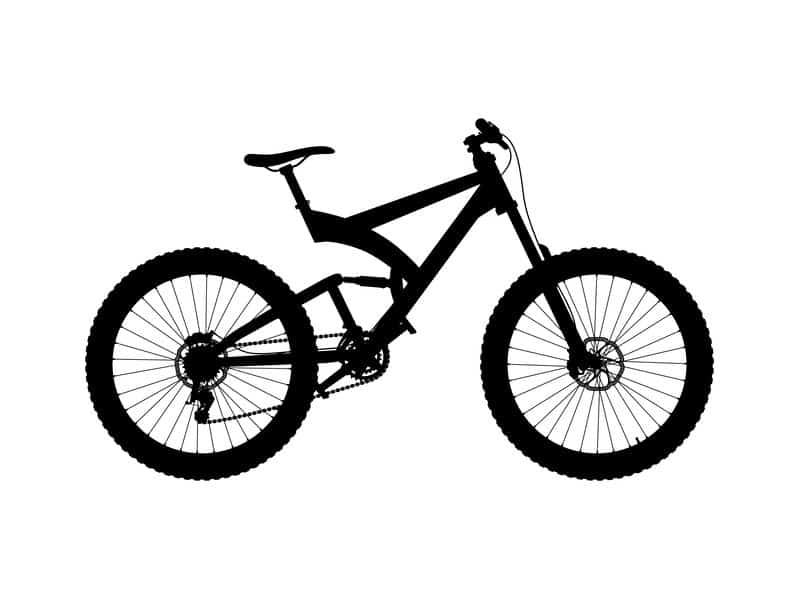When it comes to the front suspensions, full suspension mountain bikes are the same as hardtail mountain bikes. The real difference between the two comes with the rear suspensions, also called rear shocks, and the setup of the rear wheel. This is attached in an entirely different way to the rest of the frame to allow the suspension to work.
Full suspension mountain bikes work by allowing the front and back wheels to have some ability to move up and down. This allows the rider to have a softer ride while traversing over rocky and bumpy terrain. Springs and dampers are put together and are collectively referred to as a shock absorber.
Knowing how the suspensions on your bike work can help you a lot when it comes to taking care of them. This can also help you know what to expect and help you pinpoint the problem if something should go wrong with one of them so that you do not end up wasting your time fixing a part that is not broken.
How Does A Suspension On A Mountain Bike Work?
A suspension on a mountain bike can be divided into two parts: one part is how the wheel attaches to the suspension and how that in turn attaches to the frame of the bike; the other part is the shock absorption part that is made primarily of the spring and the damper. The shock absorber works mostly in the same ways on both the front and the rear suspensions, but the attachments on the other hand are quite a different story, but we will get to that later.
The spring can be an ordinary metal coil like what you can find if you were to take apart a click pen. The other option for the spring is that it can be a small pocket of pressurized air. Even the coil spring has pressurized air to it, however, so both of these can have air added to them or taken away from them in order to affect the springiness.
The spring is held in a cylindrical piston that moves up and down inside the suspension tube. As it moves up and down it affects the damper which dissipates the energy from the bounce. This is what keeps your bike from repetitively bouncing up multiple times after each bump it hits like what happens when a bouncy ball hits the floor.

When the spring is compressed, it forces oil to pass through a small hole. Almost all of the most common kinds of dampers use oil to work, even car suspensions using this same kind of damper. The reason why oil dampers are so widely used is that they work so well. They not only do their job at dissipating the energy form the impact, but they also have the added benefit of giving more resistance the harder and more suddenly pressure is applied to the shock absorber.
So the shock absorber has two main parts, but it also has two main adjustable features to it. These are called the sag and the damping speed. The sag is affected by the air pressure in it and is measured by how much the suspension moves by you simply getting on your mountain bike with your full weight. The greater the air pressure, the stiffer it will make your suspension and the less sag there will be.
The damping affects how quickly the spring bounces back into its place. If the damping speed is too slow then the spring will not have the time it needs to get back into its place after every bounce because the damper will prevent it from doing so. If the damping speed is too fast then the spring will bounce back into place so quickly that it might feel like you are sitting on a pogo stick.
How Does The Rear Suspension Of A Mountain Bike Differ From The Front Suspension?
Knowing how the suspensions on your dual suspension mountain bike work is one thing, but knowing how these attach to your wheels and in turn attach to the frame of your bike is also a key part of how full suspensions on mountain bikes work.
The front suspension on a mountain bike is most commonly referred to as a suspension fork. This “fork” is joined together at the top and then somehow splits into two in one of a few ways. One of each of these two forks goes on each side of the wheel and connects to the middle of this. They also have a small bridge that helps to keep it stable at the right distance apart, this bridge being a few inches above the tire.
With a front fork suspension, both sides of the fork move at the same rate and attach straight up into the handlebars just like any bike does that is not equipped with a front suspension.
Rear suspensions are an entirely different story and are just as often referred to simply as rear shocks. While there is mostly just one way that front suspensions are attached, there are any number of different ways that rear suspensions can be attached to your mountain bike. Oftentimes the part of the frame that attaches the center of the back wheel to the pedals remains unaffected and this part at least can look very much the same.
In order to allow the small amount of up and down movement that you need for the rear suspension to really work, each of the joints that attach the rear wheel to the rest of the frame have pivots that allow this movement and add flexibility to your mountain bike frame.
Since the main object of having rear shocks is to avoid any jarring from the wheel travelling to your seat, the frame where your back wheel attaches to the bar your seat is on is entirely different when there is a rear suspension. Instead this can attach to the horizontal bar that goes in between your seat and your handlebars and connects them.
Instead of being directly on the wheel like the front suspension is, the rear shocks can be located in the top part of the triangle that attaches it to the frame or even in an added side part of the triangle that is basically right under the seat and which is put there as a place for the rear shocks. In this case the top bar coming from your rear tire may not connect with your seat bar at all.
This can make it look like there are two seat bars there, with the rear shock sometimes being placed on the side of the bar nearest the wheel or at other times literally reaching around the seat bar in a variety of different ways to be placed on the other side of the bar underneath the seat.
Another option is that the top bar from the wheel can attach to the seat bar low down and literally form a sheath around the bar only to keep going past it and then attach itself with the shocks to the horizontal bar that goes down from the handlebars to attach to the pedals.
Some kinds of rear shocks even have what seems to be a huge metal coil wrapped around them which also helps absorb some of the shock. Though these can look really neat, they do weigh quite a bit more and tend to be far less adjustable. However, these extra shock absorption abilities can come in handy and this design is most often using for downhill mountain bike racing where the weight does not tend to matter as much as having a rear shock that absorbs as much of the impact as it possibly can.
Because of the fact that a full suspension mountain bike has an entirely different frame due to the rear shocks, it is impossible to alter a full suspension bike and to make it into a hardtail bike or visa versa. This is why it is so important to buy the right kind of mountain bike.

